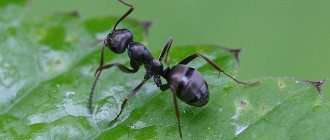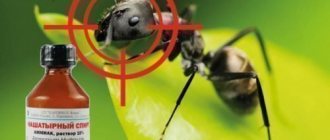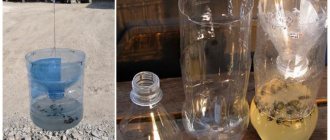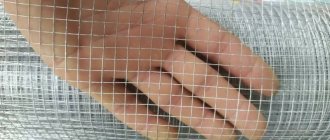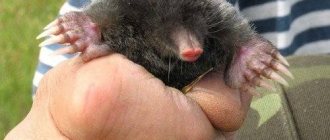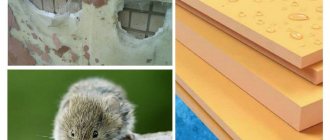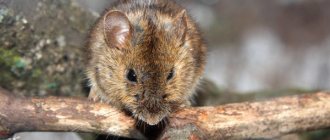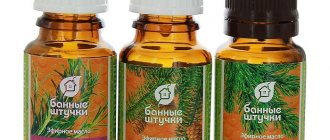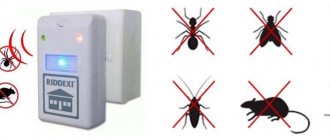Many people have been familiar with elderberry since childhood: it can be both a cultivated plant, that is, decorating a garden or a summer cottage, and a wild one, growing on forest edges, sunny, shady meadows, not far from residential buildings. Some say that this is a beautiful, incredibly useful plant, others that it is harmful, useless, even poisonous. Both are right.
Elderberry can be black or red. The first type is not just a beautiful, but quite a useful shrub, whose leaves, berries, even bark have an impressive number of useful properties. But the second one is poisonous! That is why red elderberry against mice and rats, as well as insects, is the first remedy that has been actively used by gardeners, owners of private, country estates, and farms for a long time and extremely actively. However, black elderberry is also considered mildly poisonous to mammals.
Why are rodents afraid of elderberries?
The reason why rats and mice cannot tolerate elderberries is because of the strong odor. It is due to the presence of a large amount of tannins and essential oil in elderberry. This plant is considered poisonous to small animals, and not only the seeds of the berries are poisonous, but also the roots. The shrub is widespread in Europe, Asia, North Africa, Transcaucasia and even New Zealand.
A distinctive feature of Sambúcus nígra is its unpretentiousness. It can easily be planted on a plot with one bush, and after 2-3 years the bush will grow on its own. In households, jam and jelly are even prepared from the pulp of the plant’s berries, which have a delicate taste and aroma.
Important! Elderberry fruits are safe for humans after heat treatment, but for most mammals they are conditionally poisonous.
Mice and rats run away from the smell of Sambúcus nígra because the flowers of the plant contain glycosides, in particular sambunigrin. This substance, when broken down, is converted (partially) into hydrocyanic acid. And if for humans the smell of flowers is simply unpleasant, then for rodents it is unbearable.
But this shrub repels not only small four-fingered pests - the preventive effect of flowers and fruits also extends to insects. Even ants rarely settle within a radius of several meters from such green spaces!
Did you know? In England, the traditional national drink Elderflower cordial is produced from elderflower. Drink it with lemon, mint and ice.
Poisonous herbal baits
In addition to the repellent smell, you can make poisonous baits. To prepare them, plant roots are taken.
The four-leaf raven's eye does its job well. The smell of the root of this plant causes headaches in people. For bait you need to mix rhizomes and sunflower seeds.
All underground parts of aconite antivenom can be used in the fight against rodents. To do this, it must be dried and ground into powder. Aconite powder is added to bait made from edible products.
Lobel's hellebore copes well with its assigned tasks. The rhizomes need to be infused. Grain is added to the infusion and left until it swells.
Autumn colchicum is popular because all its parts are poisonous. For bait, mix any cereal or flour with its seeds.
Various seeds can be used. Castor bean seeds, to which vegetable oil is added, help. Or use Thermopsis lanceolata, the seeds of which are mixed with bread.
You need to remember safety precautions when working with such plants. Under no circumstances should you touch them without gloves. Skin burns are not the worst consequences of improper handling.
How to kick out unwanted guests is up to everyone to decide for themselves. It is better to use humane methods to eliminate rodents, since you will not have to watch their death and remove the corpses. The main thing is not to harm yourself and your pets while fighting rodents.
- Read all comments from the beginning:
- 1
- 2
- 3
- 4
- 5
- →
We had such a modern cat, a Siamese. My friends gave it to me because I was stupefied on a high floor and had never seen the ground in my life. He began to tear at everything that fell under his claws. He spared neither raincoats nor shoes.
Do I need one? But they took pity on me, accepted me into the house, and he attacked me. We hardly threw it into the carpet that was lying on the sofa, wrapped it up and just shook it out on the street - go back where you came from. You know, I became scared, what if he went crazy at night and attacked one of us, sleepy ones.
The cat came to us very fat, well-fed, weighing, I think, eight kilograms. In two weeks he became emaciated, all the shine had faded, his ribs were sticking out. This cat has never caught anyone during his life in nature.
Then, apparently he became completely unbearable, he came to me, pushed his head under my palm, and asked to come into the house. She let me in. I regretted it again.
There were no more attacks, the cat turned into a guard cat. He didn’t let anyone stranger into the house, he attacked. And he began to love us.
But he always met me and climbed into the bags to check what tasty things they brought from the store. And we’ve never had store-bought delicious food, it’s all natural.
And so in December the pigs were slaughtered, and the meat lay on the veranda. And he accidentally got there when I didn’t close the door behind me.
Why is elderberry dangerous for pests?
Sambúcus nígra is dangerous for pests due to hydrocyanic acid, as well as odorous resins and bitterness. For example, field mice or moles would never dig a hole near such a bush, which is why, centuries ago and now, elderberries are planted near granaries, sheds, barns, cellars and simply near residential buildings, in the garden, on a personal plot.
It is dangerous, first of all, due to the toxic substances in the flowers, roots and leaves. Even the bark of a bush will not be gnawed by mice because of its bitterness and unpleasant taste.
How to determine the presence of mice in the house
There are a number of signs of the presence of “uninvited guests” in the room:
- Rustling and grinding, extraneous sounds, mainly at night.
- The appearance of small holes, holes near the baseboards and in the walls.
- Chewed furniture, wallpaper, shredded pieces of paper (from which rodents make their nests).
- The presence of droppings on the floor with a specific odor.
- Musty room.
- A clear reaction from a cat that will react to mice moving around the house.
If the home owner notices such changes, then rodent control should begin immediately.
Mouse droppings
Which elderberry is best for protection?
For protection against rodents, it is the black elderberry or Sambucus nigra Albovariegata, known as the white-variegated one, that is suitable. The first plant is easily recognized by the intense dark color of the leaves; it is strikingly different from other inhabitants of the garden. A characteristic feature of this shrub: long sharp leaves and shoot heights up to 6 meters.
Important! Elderberry is not dangerous for dogs and cats. Household or yard pets do not show any interest in the fruits or flowers of the bush.
It is extremely rare that bushes can reach 10 meters; more often this happens in wild forests or forest plantations. In dacha areas, elderberry is rarely tall; it is more spreading and bears fruit well. The second type of plant has rich green leaves with a white border along the edges.
Another type of shrub used both to decorate the garden and to repel garden pests and small rodents is Sambucus nigra Eva. Better known as “black lace”. It has incredible carved leaves and flowers painted in a soft pink color.
It is used to decorate public parks and gardens, and grows en masse in the botanical gardens of Scotland, England and Wales.
Like the two plants described above, it is also toxic to small mammals. A poisonous attack from Sambúcus racemósa or red elderberry will also repel pests. The difference between the plant and those previously described is its small red fruits, similar to rowan. Otherwise the properties are identical.
Also find out where and how to plant black elderberry correctly.
Daffodils
More precisely, not the flowers themselves, but their dug up bulbs. To protect plantings of root crops (potatoes, carrots) from mice, in the summer they dig up daffodil bulbs and distribute them over the entire area of the beds, mixed with coriander stems, and then cover them with mulch.
Daffodils are able to protect against mice and their bulbous “colleagues in the flowerbed” - tulips. Mice are always ready to taste their bulbs. To protect these flowers, daffodil bulbs of low-growing species are planted around the tulip bed in the fall.
Methods of protection using elderberry
For preventive purposes, branches are cut from the bush and laid out inside utility rooms. Elder branches were previously used to restack hay bales to prevent mice or rats from roaming inside the nest.
It is recommended to plant Sambúcus nígra near chicken coops, various farm premises where animals are kept and, of course, near the entrance to a residential building or cottage. Then we can say with confidence that rats will not be able to enter the veranda of the dacha or take up residence in the cellar.
In the house
How to use Sambúcus nígra to protect yourself from rodents in your home.
- Place the dried berries of the plant on the shelves where food supplies are stored.
- Place a bouquet of flowering shoots on the table in the summer kitchen.
- Place elderberry seeds in the cellar or pantry (if necessary, they can be quickly swept away, but mice or rats are irritated by the seeds stuck to their fur, and the rodents quickly retreat).
In the garden
Common ways to protect yourself from pests, mice and rats using Sambúcus nígra in the garden:
- chopped branches are laid out in haystacks;
- they replenish food supplies in the cellar with freshly cut shoots;
- the berries are scattered throughout the area among flowering plants or fruit trees to prevent tree pests from attacking the crop;
- cut shoots are placed under agrofibre to prevent mice from gnawing on seedlings in winter or early spring;
- The trunks of fruit trees are tied with elderberry branches and leaves.
A useful and aesthetically attractive shrub plant should grow in every area, thereby preventing the invasion of rodent pests. Experienced gardeners recommend growing forest crops not only near residential and commercial premises, but also near reservoirs, so that the water will always be clean and midges and mosquitoes will not swarm over it.
Herbal essential oils
In pharmacies you can buy essential oils that are prepared from herbs. The aroma from the essential oil will be stronger and richer than from fresh or dried herbs. It will be felt longer.
It is known that rats are afraid of the smell of peppermint essential oil. The same goes for mice. The oil is dripped onto cotton pads or napkins and placed in the corners of the rooms.
You can drop a few drops into the water before washing the floors. The smell will be felt throughout the house, so you shouldn’t overdo it. The pungent aroma causes headaches and dizziness.
In addition to mopping the floors, you can diffuse essential oil from a spray bottle. To do this, drop from 1 to 15 drops of oil into 300 ml of water and add 10 ml of alcohol. The mixture is applied wherever animals may be.
Special aroma lamps are sold in stores. The essential oil evaporates along with the smoke, and the smell penetrates into all the cracks.
Direct contact of the animal with the oil must be avoided. If it gets on the fur of a rodent, it will lead to death. For lovers of humane methods of elimination, murder is definitely not suitable.


